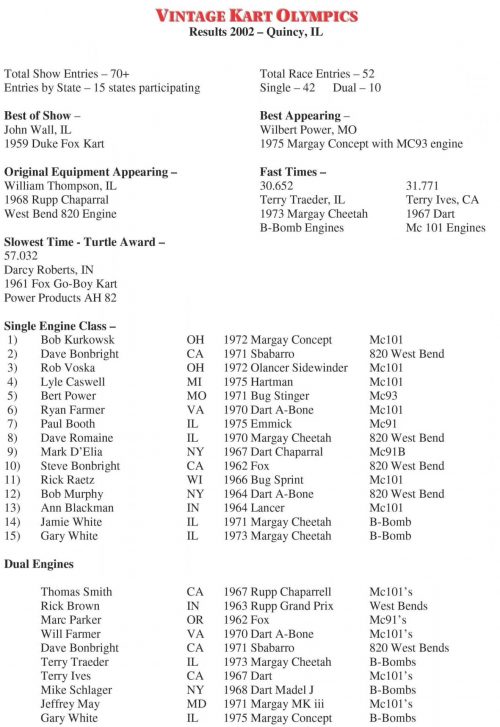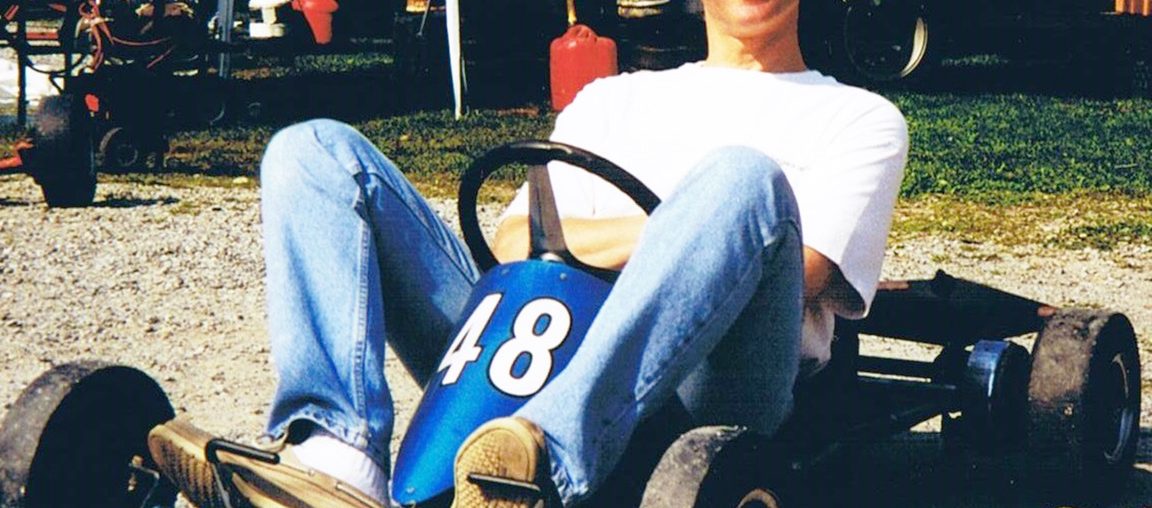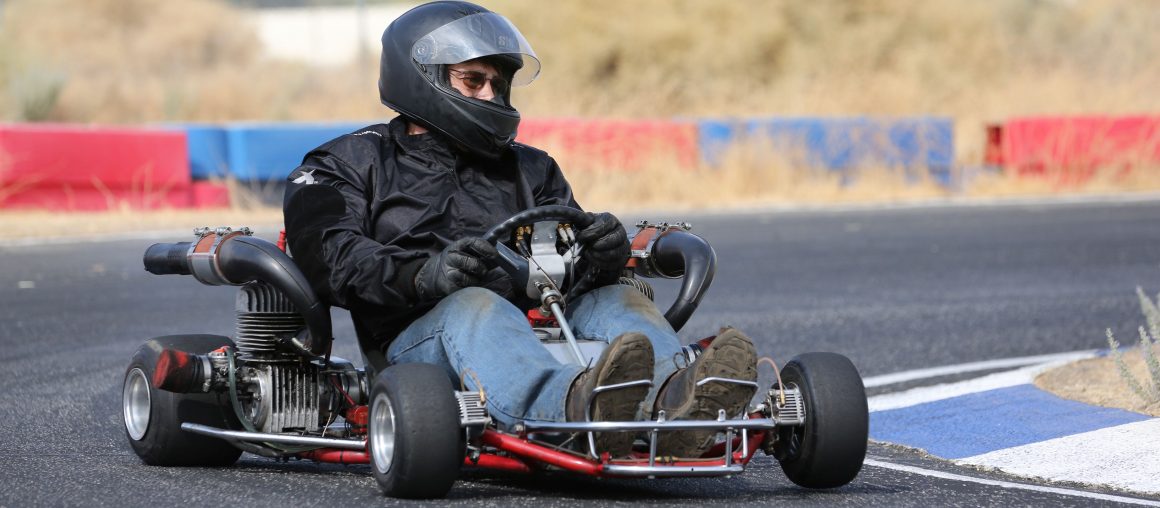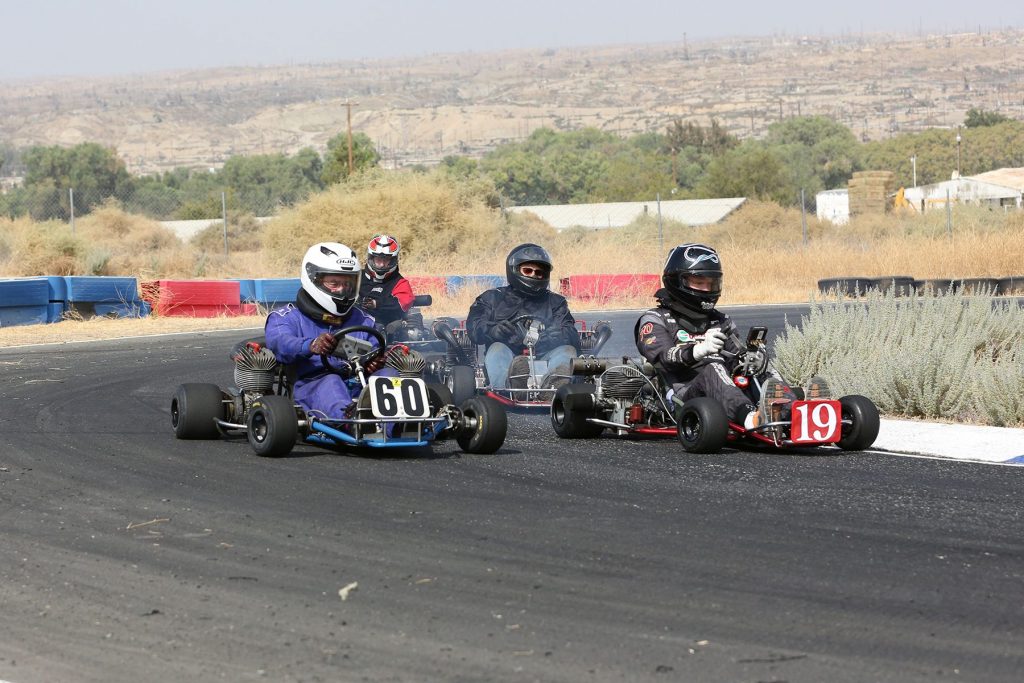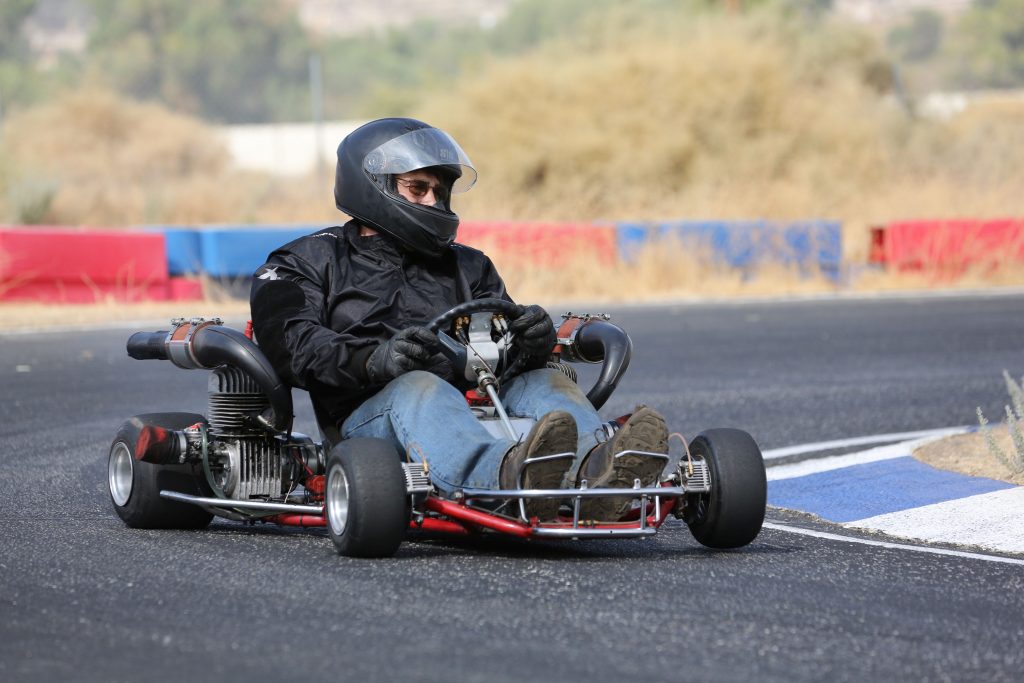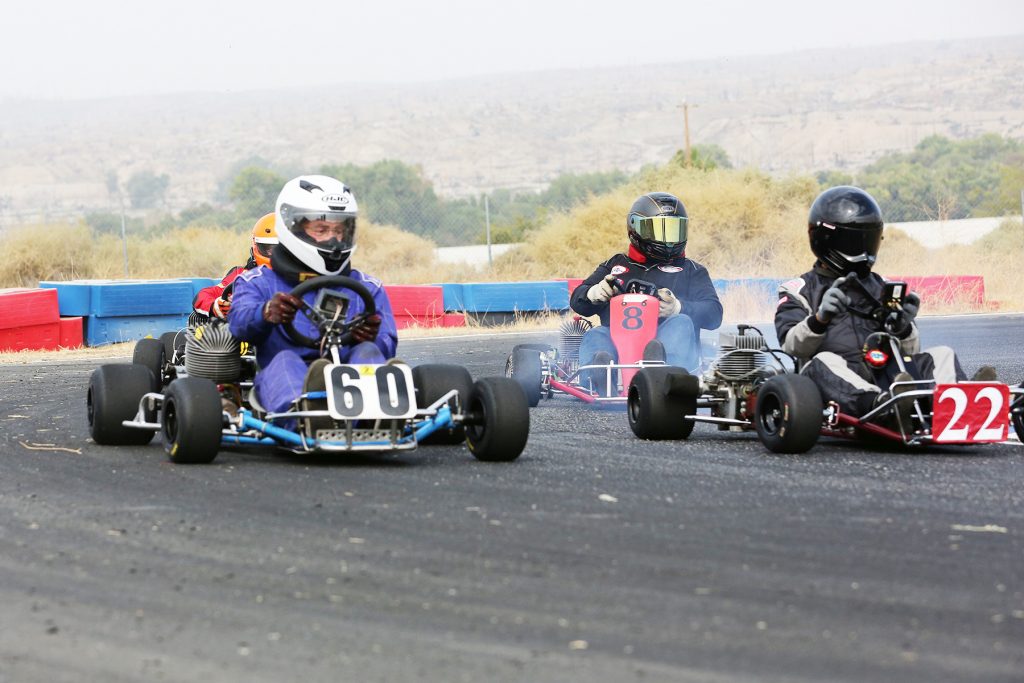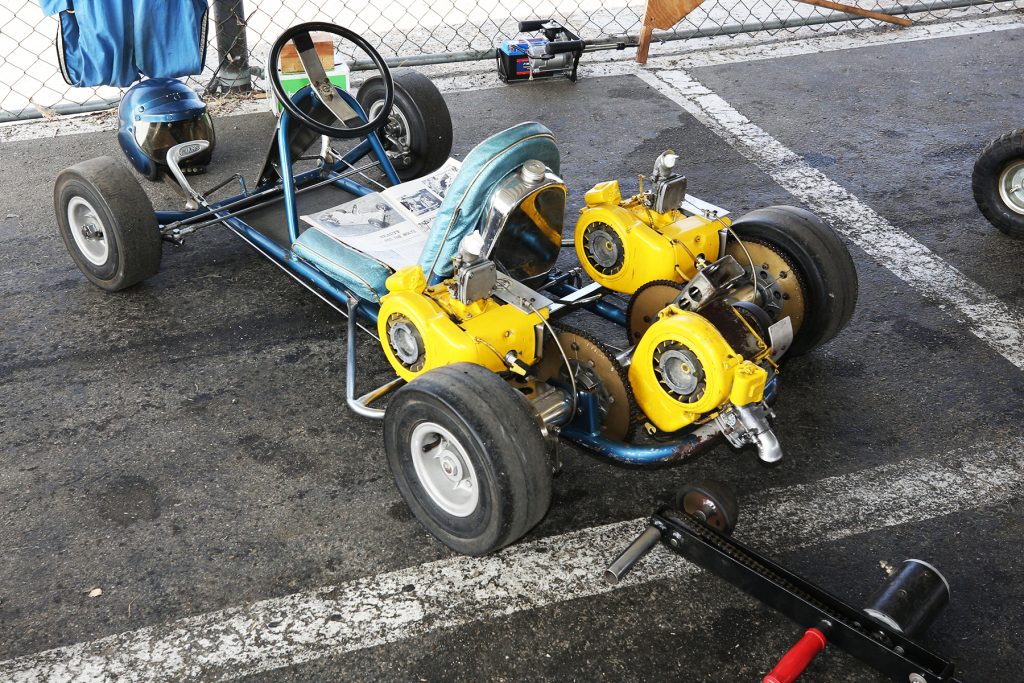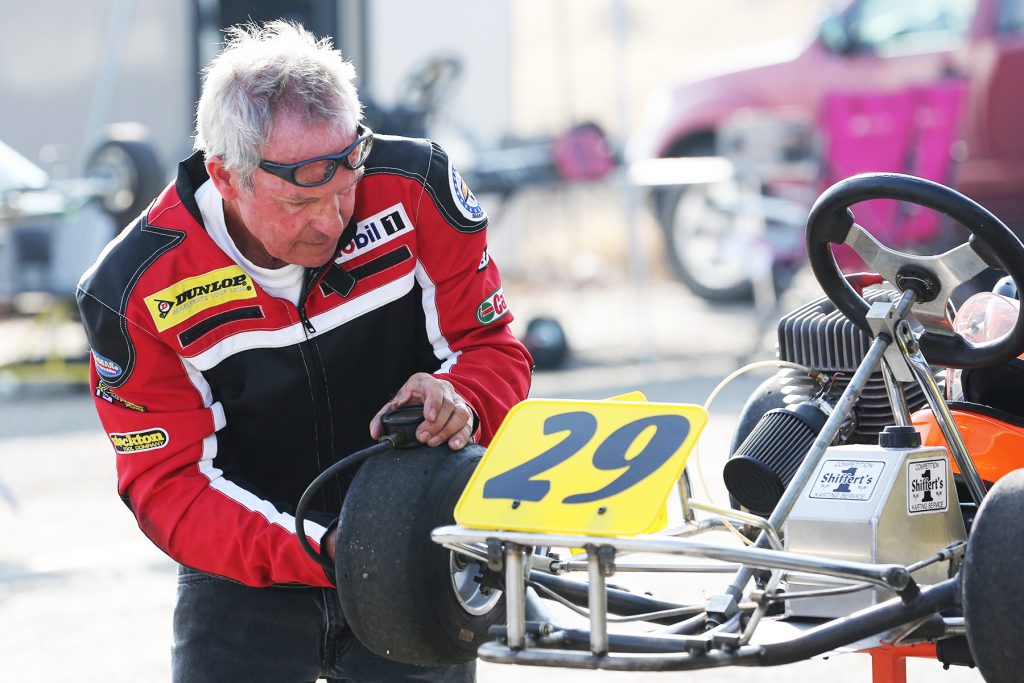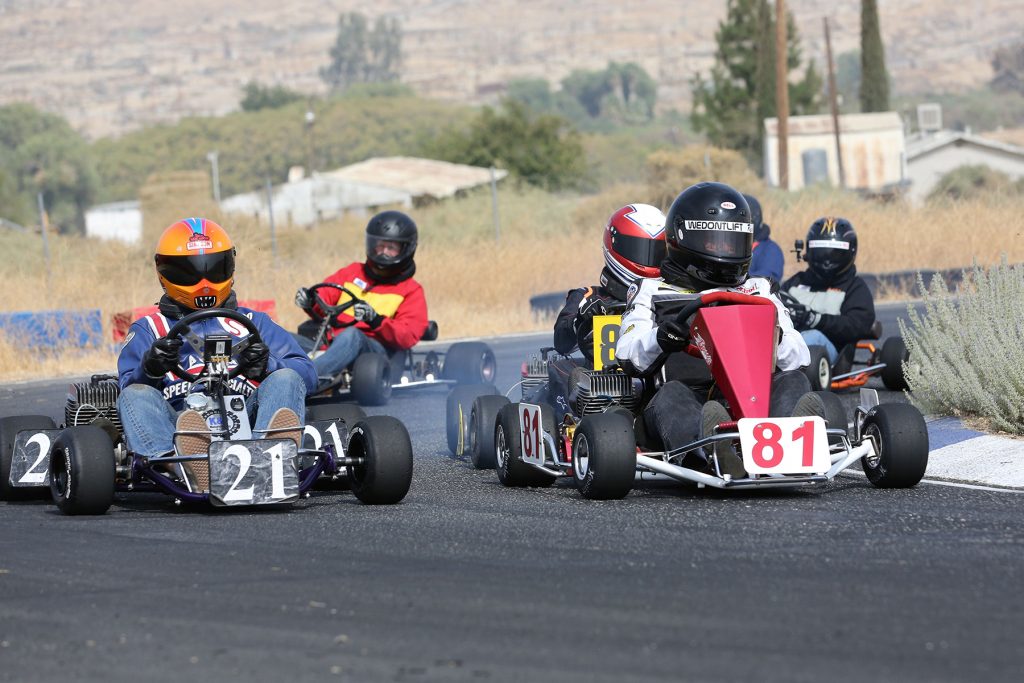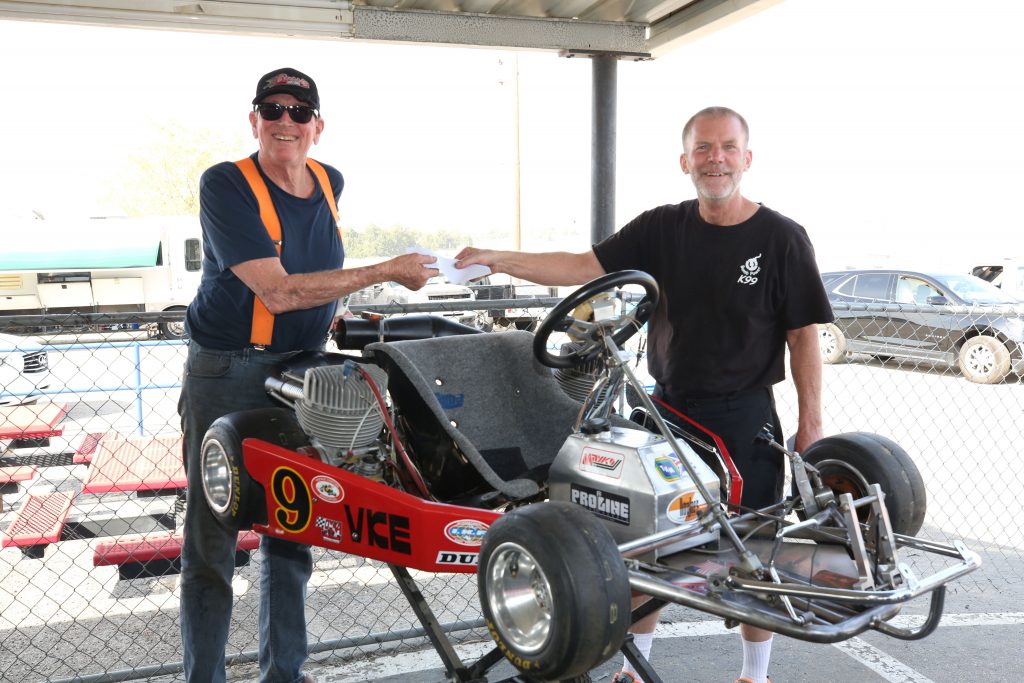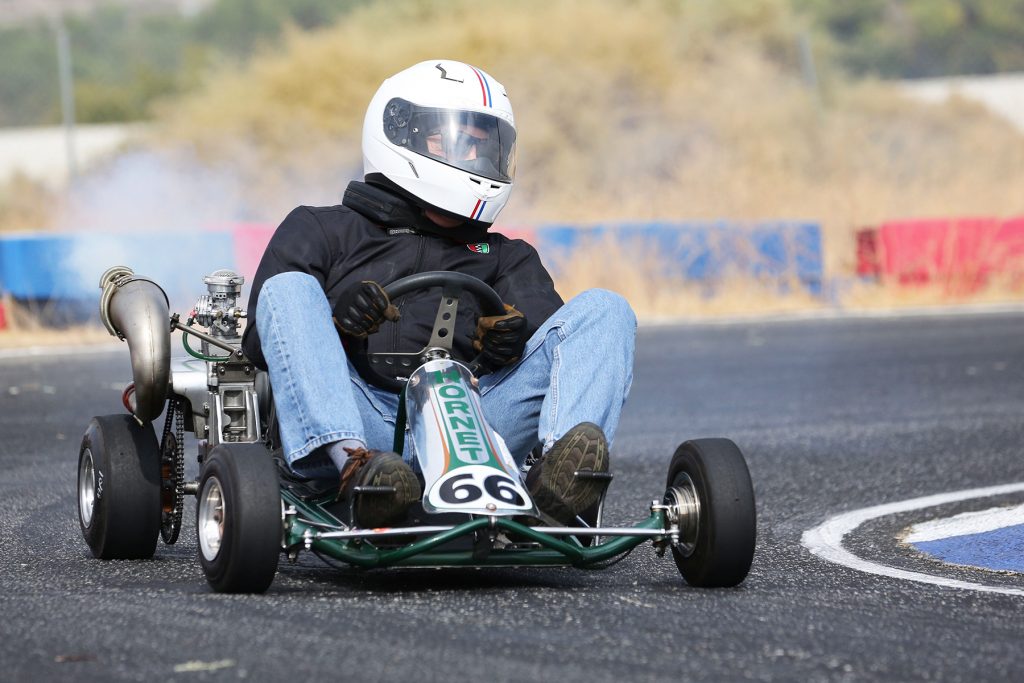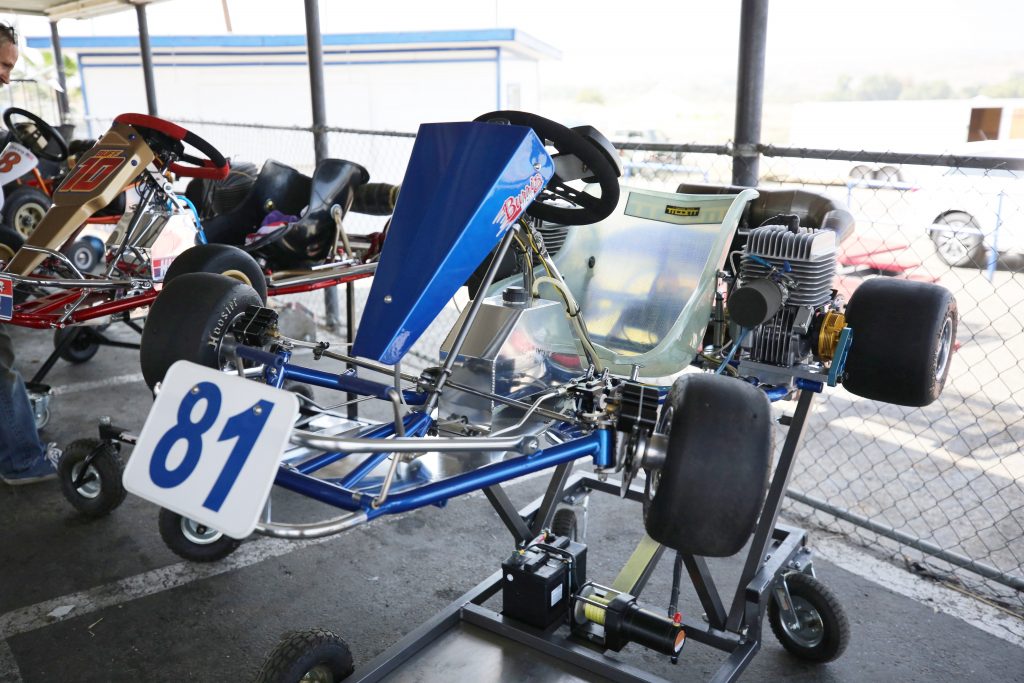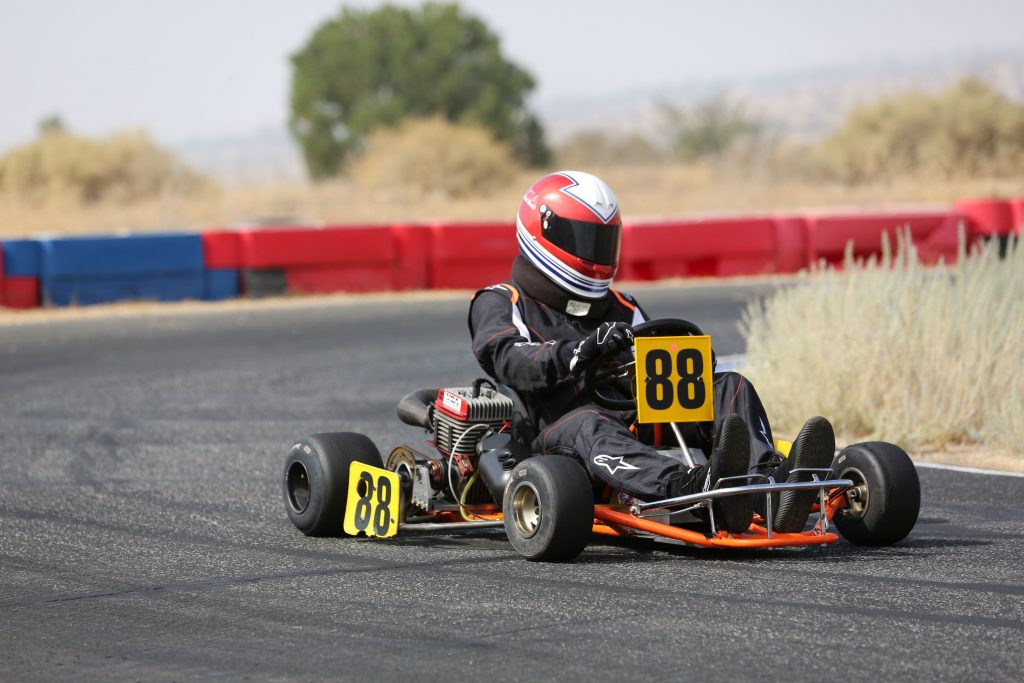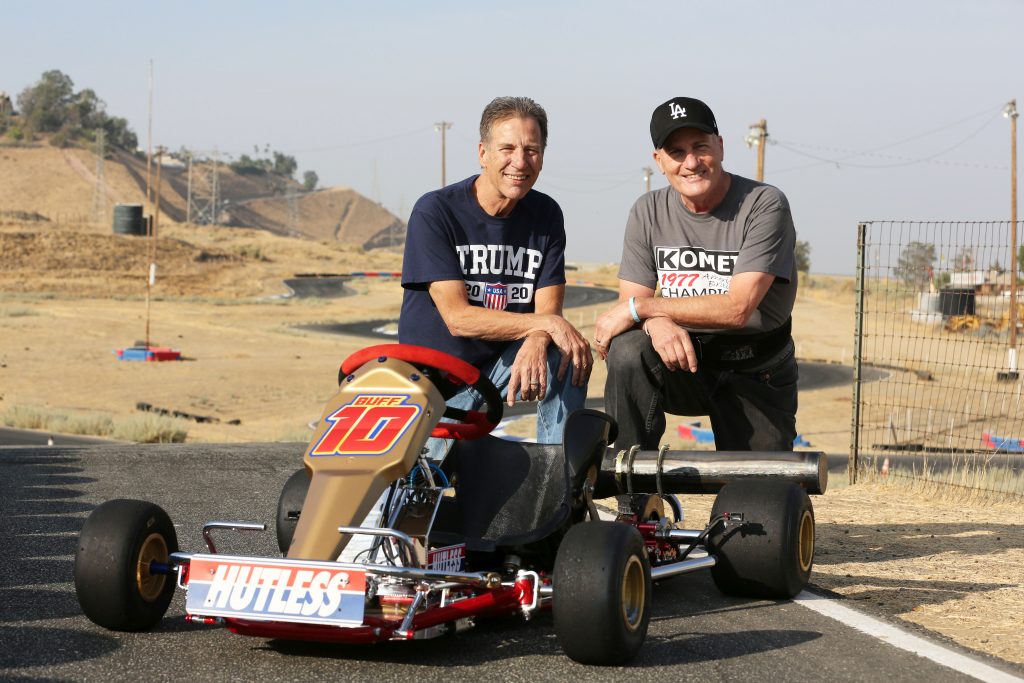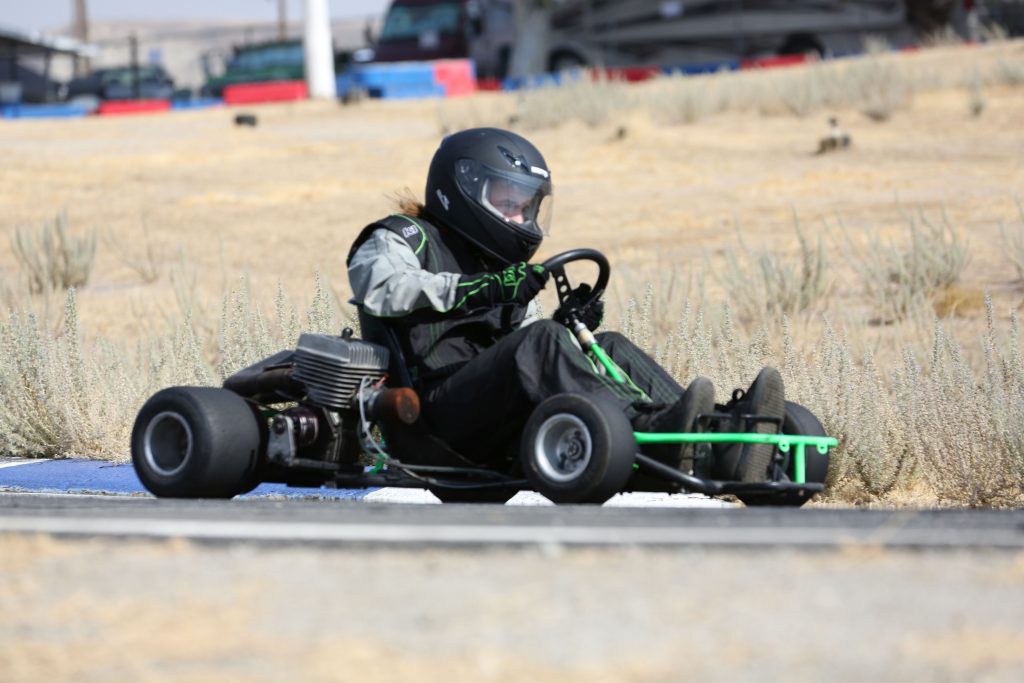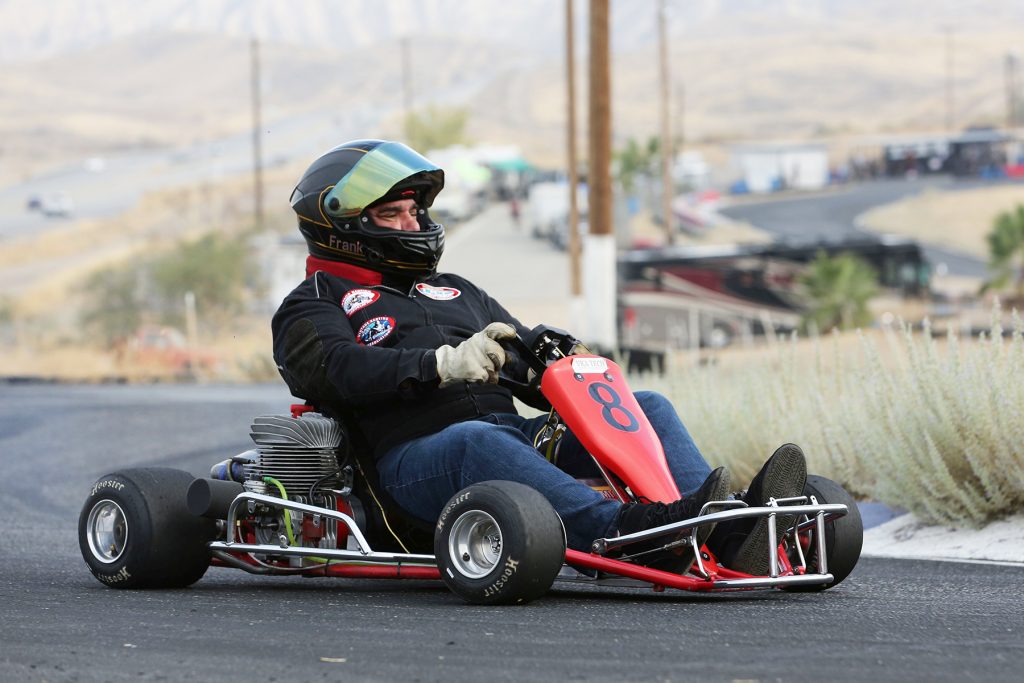VKA History Lesson
Why Y2K Is Noteworthy
By Mark D’Elia
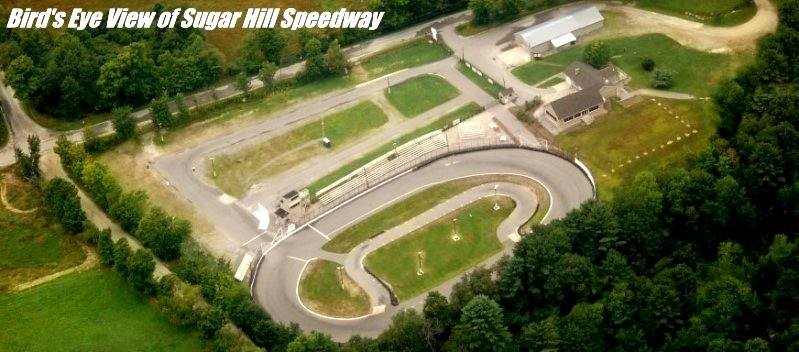
It all started back at the end of the last century. I was surfing the web on my dial-up modem desktop computer when I accidentally came across a website “Vintage Karts”. It started out “a fun site dedicated to the early days of karting.” “Vintage Karts” is about early Bug Karts, Dart Karts, Fox Go-Boys, Go-Kart 400’s and 800’s, Kavalla Karts, Xterminators, and all the rest of those little machines that formed the beginnings of the sport we’ve known for decades as “Karting”. There were photos of early karts and engines that I remembered when I was maybe 13 years old and was dying to get my first go-kart. I would occasionally revisit the site, bringing back happy memories of Ala-Karts and McCulloch 10’s. It was interesting but there was really nothing happening, no current events. Then one day in early 2000, there was a “happening”. Some guy named Carl Billington was putting on a race. The VKRA Eastern Regionals would be held Aug 26-27, 2000 in Weare, NH.
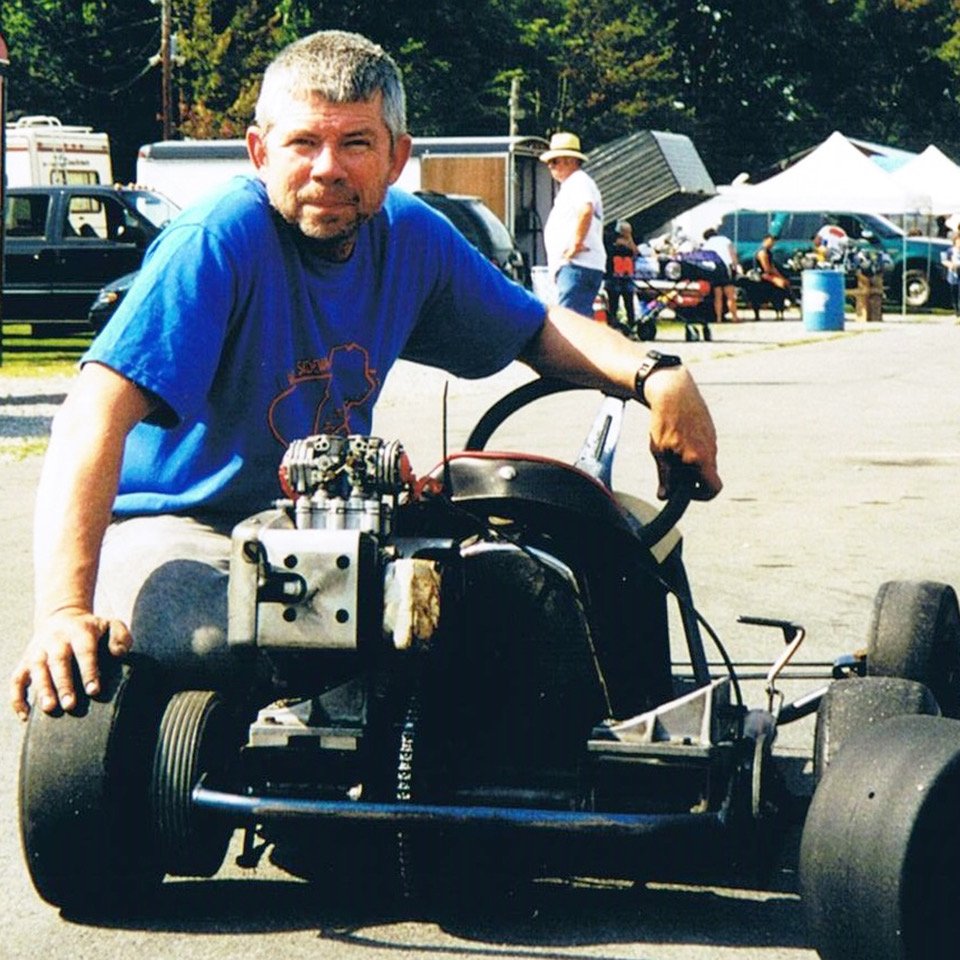
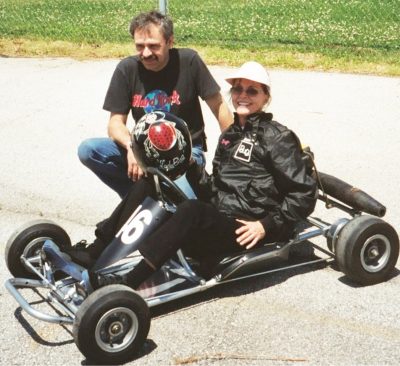
Unwrapping A Piece of History
I still had my Dart Chaparral, the final successor to a Fox Mak Kart, Bug Wasp, and Dart A-Bone. I bought it new with money from my paper route along with an MC-91A. Those karts spanned my karting experience from 1964 to ’70 (6th to 12th grade). It was a great time to grow up; we had the Beatles, the race to the moon and go-karts. I had joined a kart club and raced locally. By 12th grade I had a Camaro SS-350 and it was time to move on. But I always had a special place in my heart for go-karts. They were finely tuned little racing machines, the minimum of what it took to go that fast. It was something I was good at. It’s how I learned to be a mechanic. The Chaparral had sat in my parent’s basement for 30 years. My Father had wrapped it up in plastic. There was really nothing to do with it, driving around some parking lot by myself didn’t seem very exciting. But now there WAS something to do with it … a RACE. Could I get this thing running again, and could I still drive it like I did, 4-wheel drifting at 55 mph? I usually have a tendency to talk myself out of things, but this time would be different. I was given a sign.
From the day I joined that club, Niagara Frontier Go Karters, my racing number had been 48. That May on my 48th birthday, I made up my mind, I was going RACING!
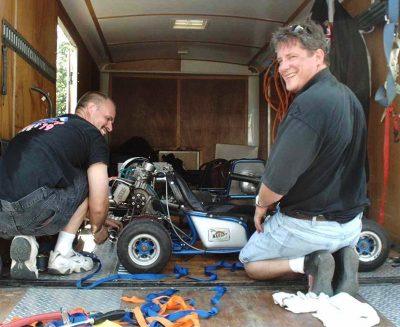
The First Vintage Kart Event
Saturday morning, Aug 26, 2000, I arrived at Sugar Hill Speedway, Weare NH, not knowing what to expect. It was a small, oval ⅕-mile course with a short infield turn-in. There were mostly modern karters there, but the vintage guys were all grouped together. I met Carl Billington, he was busily trying to run the event, get his own kart going, and help everyone else. There was a total of 11 vintage karters entered. Almost all were rear engine karts with McCullochs. Most were singles, maybe four were twins. Carl was running twin WB-820s. After a lot of wrenching and with some help from Carl, I was finally able to get my kart running, limping around the track at first, and finally after getting it sorted out, I was flying around the track, drifting in the corners. After 30 years I could still drive like that. Later that afternoon, I met Bob DiNozzi, an engineering type who worked for defense contractor Raytheon. Apparently, he never had a kart when he was a kid but had always wanted one. One day he decided he wanted to learn how to create a website. He needed a topic. He chose “Vintage Karts”, and the rest is history.
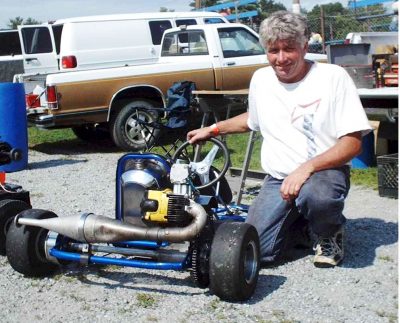
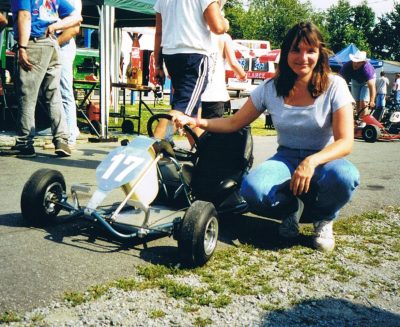
Later in the day we held the first race, all 11 karts out on the track together. What a great feeling, to be out on the track, alongside other karts in the pace lap, waiting for the green flag to drop. When it did, I couldn’t believe what happened. I managed to get to the front of the pack, second to a Dart Grand Prix with dual MC-90s. He had a big lead but then he lost one engine. I almost caught him but when the race ended, I was second, which made me the Single Engine Class winner.
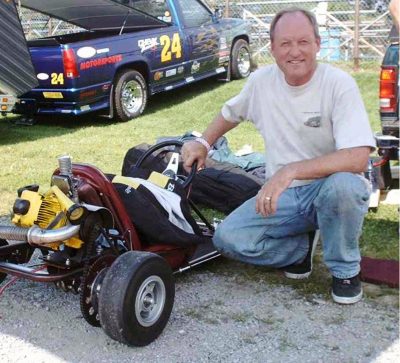
Forming An Organization
After everyone packed up their karts, we headed to a local pizza joint to recap the day’s events. Carl began to discuss his dream to create a club where we could all bring our vintage machines back to life. That weekend the VKRA (Vintage Kart Racing Association) was born. He wanted all of us to be his Board of Directors. The next day we were all back on the track. We ran three more Heats, passed out the trophies, and headed for home.
With the new Board Members spread out over 6 states, it was obvious there could be no physical meetings. We would have to rely on the internet. Carl came up with a chat room called ICQ and we would have our meetings online, typing in our comments. I would also send e-mails to individual members and we would share our ideas. Mostly this was with Marc Parker. He was really excited about the whole thing. Marc was an executive for American Express and had quite a collection of Vintage karts. Although he lived in Portland, Oregon. He originally was from Spencerport, NY, about 70 miles from me. We had both driven at the same track … Kelly’s Speedway in Batavia NY. Our initial meetings had great expectations. We would pick up where we left off thirty years ago. There was even an investor, Wayne Haviland, who had purchased the rights from McCulloch and created his own McCulloch Racing Corp. He was talking about building a new MC-102.
I decided to start drafting up rules for the VKRA. For inspiration, I consulted versions from the 1960 Go Kart Club of America, and IKF rules 1970 and 1980. I couldn’t be too specific, there were a lot of variations in early karts. Marc Parker had told me you will never have a level playing field, and I think he was right. With his business background, Marc was the perfect choice to take care of all the legal details. His work lead to the creation of our Corporate Charter on May 23, 2001. Marc became the first President of the Vintage Karting Association (VKA).
2001 came and went. I put on race #2 at Batavia NY, home to the 1968 Nationals. We had 12 entries, one more than last year. We included a swap meet and a kart show. I had no desire to judge the show, so I passed out ballots, and let everyone vote for their favorite. The Peoples’ Choice was born. Carl Billington put on the 2001 Nationals in August,, This time we went to Cuddebackville NY. The modern karters sharing the track that weekend didn’t enjoy us messing up their “real racing”.
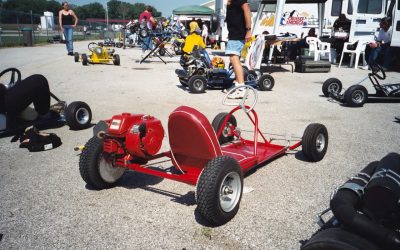
2002 – The Momentum Year
2002 began with the event that would raise the bar for Vintage Karting. Gus Traeder was holding a race in Quincy, IL, quite a drive from Niagara Falls. Gus was a showman and really knew how to put on an event.
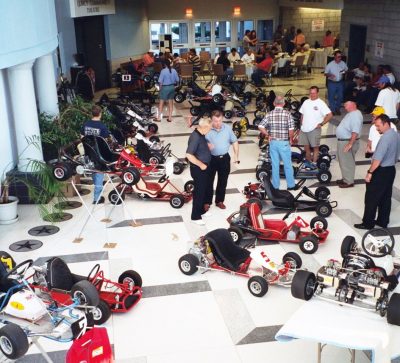
There were 52 entries and there were people I had only read about in Karting World magazines. I heard Faye “Ladybug” Pierson would be there. It looked like a festival, with tents and vintage karts everywhere. There were no modern karts here. This was a new level of racing for me, karters from the Nationals class. I did get to meet Faye Pierson. I had bought a Bug Scorpion II from my friend about a year earlier. I saw her wearing her Bug jacket so I asked if I could photograph her with my Bug kart. She did one better, she jumped right in, I took the pictures, and then she took it out on the track for a few test laps! She even signed the number panel. That night we loaded up the karts and drove across the Mississippi river to the Quincy Convention Center for the kart show. Judging the karts were Faye Pierson from Bug, and Don Freber and Reggie Fulks from Margay. There were speeches and tables of food. The next two days were the races (should I say “demonstration events”). I was in the first 100cc race. We got the green flag. I dove into the first turn and immediately crashed into a sidewinder kart who was on the outside of me. I was not the only one. There were several crashes and they had to restart the race. Later that day I was walking through the pits and I was looking at an old Fox kart parked next to a sidewinder. I had never been able to define a clear line when I tried to create the classes. There was no date when everything changed. But after crashing in turn one, I realized the difference between those two karts was that the Fox drifted through the turns and the Sidewinder held the corner. They should not be racing together. Rear and Sidewinder was born.
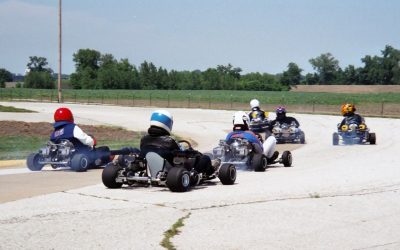
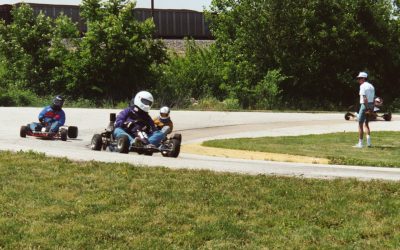
After many rewrites of the rules, I was getting closer. Marc Parker told me the insurance companies were nervous after the 9/11 attacks. I would have to rewrite the rules. Races would become “demonstrations to recreate the look and feel of actual vintage karting events”. The VKA was not a sanctioning body, with no power of enforcement, the rules would become “Guidelines for event promoters”.
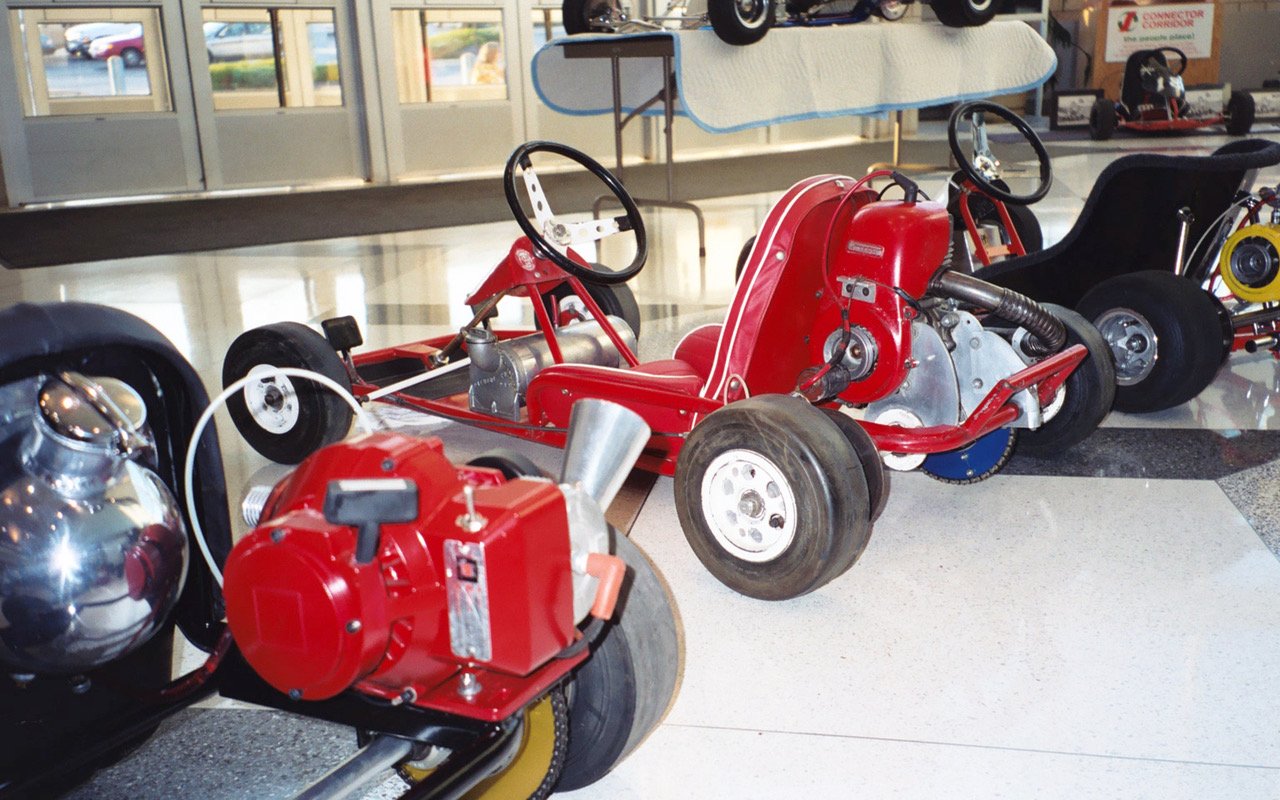
Historic Class – Recapturing The Golden Era of Karting
When I was a kid. we had a class called Sportsman. If you were a newbie, or just couldn’t afford to keep buying the newest engine from McCulloch, you could run your old West Bend 580, Power Products or maybe a Mac-10 on your outdated chassis and have fun like the rest of us. I always loved those early machines. We needed a separate class for them. I did not want to use the term “Sportsman.” These karts were the roots of our sport and we needed to recognize them. I thought “Historic” would give them that recognition. Early in 2005 I was trying to log in to our monthly VKA meeting. It could have been on the phone by then, I can’t remember. I was having a lot of problems getting on, and when I finally did, I was informed that the rest of the board had voted for the 2005-2006 officers. Marc Parker was retiring as the VKA’s first president. Vince Hughes would succeed him, and I had been elected Vice President. That’s what you get when you’re late. A year later I retired, becoming just another vintage karter, VKA member #006.
